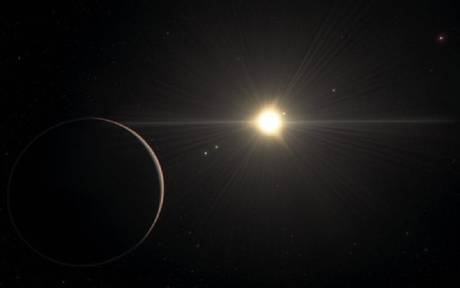Observed a strange planetary system 200 light years away, in the constellation of the Sculptor: it is made up of six worlds, five of which move in resonance, with an unusual celestial dance around a star smaller and colder than the Sun. The discovery, that could revolutionize the theory of planet formation, is published in the journal Astronomy & Astrophysics, is due to the Swiss universities of Geneva and Bern and is coordinated by astrophysicist Adrien Leleu, of the Center for Space and Habitability (Csh) of the University of Bern and researcher in the Cheops program of the European Space Agency (ESA).
Called Toi-178, the new planetary system has also been studied from Earth, with the Very Large Telescope (Vlt) of the European Southern Observatory (ESO).
The European satellite Cheops instead studied it from space, in which Italy participates with the National Institute of Astrophysics (Inaf), the Italian Space Agency (Asi), the University of Padua and the Leonardo group, has created the 'eyes' of the satellite.
Unlike in the Solar System, the rarer gas planets in the Toi-178 system are located closer to their star than the planets with higher densities, comparable to Earth.
“The most exciting moment was finding the last planet, looking for it exactly where indicated by the resonance pattern discovered with the first Cheops observations”, explains Isabella Pagano, INAF of Catania, responsible in Italy for Cheops.
“For years we have said that the European satellite would only allow us to deepen our knowledge of already known planets.
Today, however - underlines the scholar - we are seeing that it is also a formidable tool for discovering new ones, and therefore for revealing the architecture of planetary systems ”.
The six planets orbit their star much closer and much faster than the Earth does with the Sun. The fastest planet, the innermost, completes an orbit in just a couple of days, while the slowest one takes about twenty days.
None of them are in the so-called habitable zone of the star, at such a distance that they have water in a liquid state and thus have conditions favorable to life.
The six planets are between one and three times the size of the Earth, while their masses are 1.5 to 30 times that of the Earth.
Some of them are rocky, but larger than the Earth, that is, they are so-called super-earths, while others are gaseous, smaller than Neptune.
Artist's impression of a detail of the Toi-178 planetary system (source: ESO / L. Calçada / spaceengine.org)
According to astronomers, the planets follow repetitive patterns in their orbits, as in a rhythmic dance, which causes five of them to line up regularly after completing a certain number of orbits.
This result, explain the study authors, raises doubts as to whether the Solar System is the reference planetary model in the cosmos.
According to experts, in fact, “while the orbital movement in the Toi-178 system is harmonious, the physical properties of the planets are more disordered, with significant variations in density from planet to planet.
This contrast - they conclude - challenges our understanding of the formation and evolution of planetary systems ”.
More clarifications could come in the future from ESO's new telescope, the Extremely Large Telescope (Elt) which is expected to come into operation in 2025.

